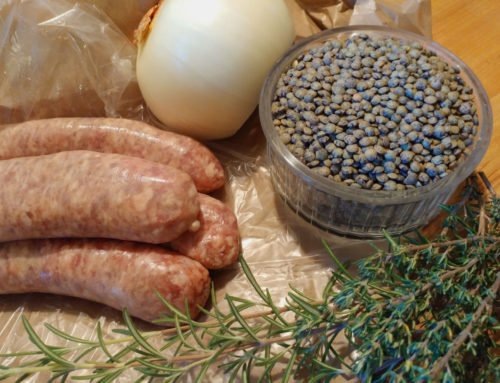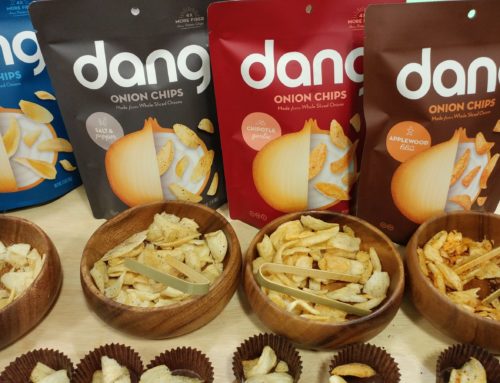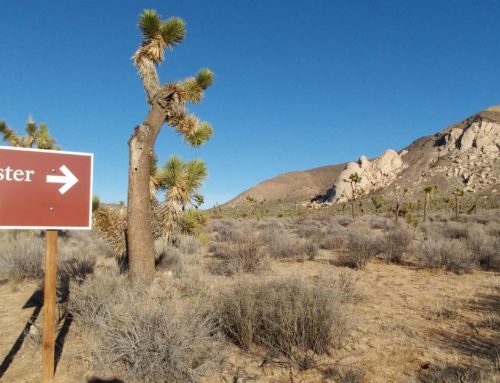The sense of place is an ever-increasing subtext when we consider our cooking and dining experiences these days. Shopping farmers markets and choosing to dine at restaurants that source locally as much as possible (if not growing much of the food they serve themselves) are de rigeur for many of us. It’s a habit that I’m all for – there is no better way to appreciate that it’s July not January, or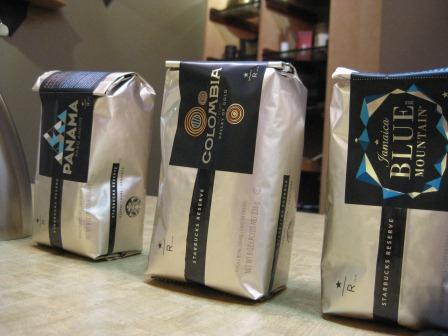 New Orleans not Seattle, than by opting for food selections that reflect the place and that moment in time.
New Orleans not Seattle, than by opting for food selections that reflect the place and that moment in time.
And we’re all familiar now with the concept of terroir when it comes to wine, the idea that what we end up tasting from the bottle is determined by so much more than just the grape used. It includes that confluence of soil, elevation, the vineyard’s perspective to the sun and the number of daylight hours grapes get, among many other influences. It’s why we don’t expect Chardonnay or Cabernet Sauvignon or Syrah to taste the same when sampled from Australia, France and Washington.
Slower to gain this sort of appreciation about the impact of place on a gustatory experience is that of coffee. It seems to me we think about roast style more than anything, light- or medium-bodied blends, high-impact darker roasts, mellower morning blends. But that is beginning to change.
I had a great opportunity last month to learn more about single-origin coffees at the Starbucks headquarters in Seattle’s SoDo neighborhood. There Leslie Wolford, Senior Green Coffee Specialist, sat me down for a tasting of some of the current portfolio of single-origin “Reserve” coffees. Two years ago this month Starbucks launched this program as an extension of their celebrated Clover brewing system. Those machines, with meticulous temperature and pressure control, really “pop” the flavor characteristics of the beans in a way other brewing methods can’t ”“ so with the development of Clover came an ideal platform to showcase distinctions of single-origin beans.
In the 2 years of the Reserve program, over 32 different coffees have been offered. Each month there are a handful of single-origins available, one of which is the “hero” for that month. Some coffees cycle in and out through the year, such as Kona, Jamaica Blue Mountain, Java, Galapagos and Ka’u, which are becoming something of “reserve traditions” that customers are beginning to look forward to, akin to the popular Thanksgiving blend that will be available again November 1.
Last month’s “hero” reserve was being offered for the first time: Sumatra sun-dried Rasuna. Sumatra is already a popular coffee with customers, known for its spicy, almost herbal character. Where this reserve version stands out is coming from the Rasuna cultivar of 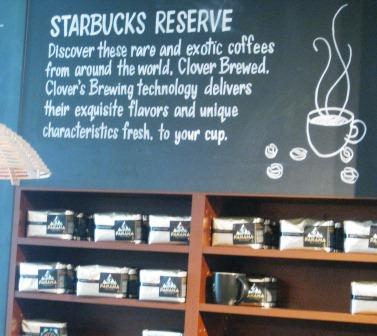 Arabica coffee. And the beans being dried in the sun with their pulp intact brings depth and richness to the flavor of the coffee. Wolford spoke of the coffee’s aroma being that of spicy dried fruit, with a flavor that touches on green-herbal and jammy rhubarb, “it will be good alongside fall’s richer flavors,” she pointed out.
Arabica coffee. And the beans being dried in the sun with their pulp intact brings depth and richness to the flavor of the coffee. Wolford spoke of the coffee’s aroma being that of spicy dried fruit, with a flavor that touches on green-herbal and jammy rhubarb, “it will be good alongside fall’s richer flavors,” she pointed out.
This Sumatra reserve is due to be available for another month or so, as long as this batch’s supplies last. Up this month in the “hero” position of the portfolio is Ka’u, from the southern tip of the Big Island of Hawaii, where some sugar plantations are converting to coffee plantations. Lesser-known than the popular Kona coffee, with its round and slightly sweet flavor, Ka’u has a more pronounced herbal character and brighter flavor. This reserve is available now and should be for the next couple of months. The reserve coffees are available in stores that feature Clover systems (an easy search on their web site), and you can also purchase the coffees on the site as well.
The idea of small-batch, single-origin coffees available in limited supply seems, at first blush, antithetical to the perception of Starbucks as a global company going through massive volumes of coffee (428 million pounds last year) to service their stores worldwide. But the surprise of this reserve program is partly what they’re shooting for; it allows customers to experience some of the more creative and distinctive aspects of coffee. To sample something in limited release that is clearly beyond that everyday cup of joe we’re so accustomed to. I’m enjoying the chance to broaden my own appreciation for nuances of different coffees by brewing some of these reserves at home–and learning a bit more about the world’s key growing regions along the way. (I have yet to write about my visit to a coffee plantation in Costa Rica last year, but it’s on the agenda….)
Wolford and her team are always looking for something new, checking out new origins/sources, and new processing techniques to showcase. They might be procuring beans from a specific harvest with the intent of using them in the reserve program. Or maybe it’s just one delivery of beans that clearly stands out upon arrival in their Global Coffee Quality department. The team there does daily cuppings of all deliveries of beans, and a standout might be directed to the reserve program for consideration. It’s one way this coffee giant is able to highlight the distinct qualities of specific regions that produce some of the world’s best coffees, a few hundred pounds at a time.

